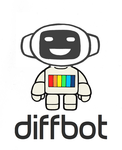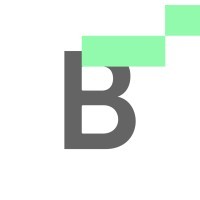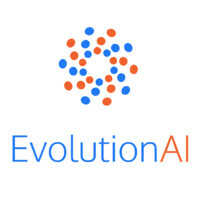Description

Botster

ParseHub
Comprehensive Overview: Botster vs ParseHub
Botster and ParseHub Overview
a) Primary Functions and Target Markets
Botster
- Primary Functions:
- Botster offers web automation services, focusing on creating bots that can perform a wide range of tasks, including data extraction, web scraping, and automated reporting. Botster allows users to automate repetitive tasks on the web without needing to write code by providing a selection of pre-built bots and the ability to customize them.
- Target Markets:
- Botster typically targets businesses of various sizes needing web scraping and automation solutions, especially those in e-commerce, digital marketing, data analytics, and competitive analysis sectors.
ParseHub
- Primary Functions:
- ParseHub is a web scraping tool designed to extract data from dynamic websites. It provides a graphical interface to help users design their scraping tasks, even with minimal programming knowledge. The tool can handle JavaScript-heavy websites, automate repetitive tasks, and export data in various formats.
- Target Markets:
- ParseHub targets a diverse audience encompassing business analysts, data scientists, academic researchers, and small to medium enterprises that need to collect large volumes of web data efficiently.
b) Market Share and User Base
Calculating market share and comparing the user base for Botster and ParseHub can be challenging due to the lack of publicly available detailed financial reports or user statistics specific to these niche products. However, insights can be derived from online reviews, user satisfaction reports, and general industry trends:
- Botster:
- Market presence tends to be more substantial in circles where ready-to-use automation bots and customized bot development are heavily valued. Given its specialization, its market share might be smaller but stronger in niche areas requiring specific automation tasks.
- ParseHub:
- Given its age and established presence in the market, ParseHub likely commands a larger share of the web scraping market, particularly among users preferring a visually guided scraping solution. The user base likely includes a more extensive array of non-technical users and institutions looking for robust web data collection tools.
c) Key Differentiating Factors
-
Usability and Accessibility:
- Botster emphasizes offering pre-built bots and an easy setup process to accommodate users who may not have coding skills, providing a quick-start solution with customization options.
- ParseHub shines with its graphical interface that facilitates the building of custom scraping functions through a more visual approach, appealing to users who prefer to interact with tools graphically rather than programmatically.
-
Customization and Flexibility:
- Botster allows users to configure and customize existing bots, potentially offering more tailored solutions for web automation depending on the task complexity.
- ParseHub offers flexibility in designing custom scraping protocols to navigate and extract complex data from dynamic websites, supporting a wide range of website structures and JavaScript rendering.
-
Focus:
- While Botster is centered around a broader spectrum of web automation tasks, ParseHub remains more tightly focused on data extraction and web scraping from complex websites, which could affect the choice of tool depending on a user's primary goal.
-
Pricing and Scalability:
- Each tool's pricing models may differ, impacting the choice based on budget constraints and scalability requirements. Users often consider ParseHub for its scalable scraping capabilities, while Botster might appeal with competitive rates for automation tasks.
Both tools offer distinctive advantages tailored to different market needs. While they overlap in some functionalities like data extraction, the choice between them often involves evaluating the level of customization required, ease of use, and the specific nature of tasks one intends to automate or simplify.
Contact Info

Year founded :
2019
Not Available
Not Available
United States
http://www.linkedin.com/company/botster

Year founded :
2013
+1 500-615-2168
Not Available
Canada
http://www.linkedin.com/company/parsehub
Feature Similarity Breakdown: Botster, ParseHub
As of my last update, here's a breakdown of the similarities and differences between Botster and ParseHub, focusing on their features, user interfaces, and unique offerings.
a) Core Features in Common:
-
Web Scraping Capabilities: Both Botster and ParseHub are designed to extract data from websites. They support scraping various types of content, such as text, images, and tables.
-
Data Export Options: Both platforms allow users to export the scraped data into different formats like CSV, JSON, or Excel, making it easy to use the data for further analysis.
-
Support for Dynamic Websites: They both offer support for scraping dynamic web content that might be loaded with JavaScript.
-
User-Friendly Setup: Both platforms strive to be accessible for users without deep technical expertise, offering an interface that helps simplify complex scraping tasks.
-
Cloud-Based Processing: Both tools operate in the cloud, allowing users to run scraping jobs without needing to manage local infrastructure.
b) User Interface Comparison:
-
Botster: Botster offers a clean and intuitive interface designed to make the process straightforward, even for beginners. It's focused on simplicity and ease of use, with tools for setting up and managing web scraping tasks in a step-by-step manner.
-
ParseHub: ParseHub also features an intuitive interface, but it's perhaps more robust, with both graphical elements and scripting options for more advanced users. It uses a click-and-point workflow that allows users to select elements visually on the webpage from which to scrape data.
c) Unique Features:
-
Botster:
- Pre-Built Bots: Botster offers a variety of pre-defined bots that can handle common scraping tasks quickly without requiring custom scripting. This is particularly useful for users who need a plug-and-play solution.
- Customization Services: Botster provides services to customize bots for specific needs, which can be a significant advantage for businesses with unique requirements.
-
ParseHub:
- Advanced Conditional Logic: ParseHub allows for more advanced workflows with conditional logic, offering users the ability to handle complex scraping scenarios directly within the interface.
- API for Automation: ParseHub provides an API that allows users to automate tasks and integrate scraping processes into larger workflows, making it appealing for tech-savvy users and developers.
- Desktop App: ParseHub offers a desktop application in addition to its web-based interface, which provides offline project setup capabilities.
In conclusion, while both Botster and ParseHub share several core features essential for web scraping, they cater to slightly different needs with their unique features and interfaces. Botster emphasizes ease of use with pre-built solutions, while ParseHub offers more flexibility and advanced functionality for complex tasks.
Features

Customizable Chatbots
Analytics and Reporting
User-Friendly Interface
Integration with Tools
Automation Features
Security and Reliability
Chat Automation

Advanced Features
Data Extraction
Flexible Export Options
Custom Schedules
User-Friendly Experience
Best Fit Use Cases: Botster, ParseHub
When evaluating Botster and ParseHub for data extraction and automation needs, it is crucial to consider the distinct functionalities and optimal scenarios for each tool. Here's a detailed explanation:
a) For what types of businesses or projects is Botster the best choice?
Botster is a versatile web data extraction and automation tool that excels in various scenarios:
-
E-commerce and Retail: Botster can be effectively used to monitor competitors' pricing, track product availability, and gather customer reviews across multiple ecommerce platforms. This is particularly valuable for businesses that need real-time data to make pricing and inventory decisions.
-
Digital Marketing Agencies: Agencies can use Botster for sentiment analysis, collecting data on social media, and tracking brand mentions across the web. This helps in formulating data-driven marketing strategies.
-
Recruitment and Staffing: Botster can scrape job listings and applicant data from various platforms. Recruitment firms can use this information to match candidates with job opportunities or understand job market trends.
-
Local Businesses: Small to medium local businesses can leverage Botster for local SEO by extracting data from local directories and monitoring local competitors.
Botster is best suited for businesses needing customized, scalable automation solutions that can grow with their data needs. Its flexibility makes it a good fit for varied industries that require tailored data extraction processes.
b) In what scenarios would ParseHub be the preferred option?
ParseHub is a powerful web scraping tool known for its ease of use, particularly in scenarios where visual programming and interaction with complex sites are required:
-
Market Research Firms: ParseHub is ideal for collecting structured data from complex websites that might require user interactions, such as dropdowns and multi-page navigation, making it a preferred choice for research firms needing comprehensive datasets.
-
Real Estate Companies: Firms can use ParseHub to scrape data from real estate listing platforms, aggregating information on property prices, availability, and trends.
-
Academic and Institutional Research: Educational institutions needing data for research purposes can use ParseHub for extracting information from educational or governmental portals, where content is nested and dynamic.
-
Travel and Hospitality: Companies in this sector can use ParseHub to extract data on travel deals, customer reviews, and competitor pricing from various travel aggregator websites.
ParseHub is particularly favored by small to medium enterprises and individual projects where ease of use and the capacity to handle dynamic sites are crucial. Its user-friendly interface allows non-technical users to create complex scrapers without coding, making it accessible to a wide range of industries.
d) How do these products cater to different industry verticals or company sizes?
Industry Verticals:
- E-commerce and Retail: Both tools support e-commerce, but Botster offers more generalized solutions across marketing and pricing, while ParseHub provides more customizable, complex web navigation solutions.
- Marketing and Digital Agencies: Botster's integration with different platforms makes it suitable for dynamic marketing environments. ParseHub caters to those needing structured large datasets with minimal setup.
- Research and Analytics: Both can be used, but ParseHub’s ability to handle complex interactions is advantageous for extensive data collection.
Company Sizes:
- Small Businesses: ParseHub’s user-friendly nature makes it suitable for small businesses with limited technical capabilities.
- Medium to Large Enterprises: Botster can scale to meet the data demands of larger enterprises requiring customized automation solutions.
In conclusion, both Botster and ParseHub cater to varying business needs, from simple, user-friendly data extraction to more robust and scalable automation processes, with applications across different industry verticals based on specific project requirements.
Pricing

Pricing Not Available

Pricing Not Available
Metrics History
Metrics History
Comparing teamSize across companies
Conclusion & Final Verdict: Botster vs ParseHub
When considering web scraping tools like Botster and ParseHub, users often weigh various factors, including ease of use, functionality, customization, support, and cost. Here, we'll provide insights on the overall value, pros and cons, and recommendations for deciding between these two tools.
a) Which Product Offers the Best Overall Value?
While both Botster and ParseHub have their own unique advantages, ParseHub generally offers better overall value, especially for users who need a more customizable and visually guided web scraping solution. ParseHub's ability to handle complex sites and its intuitive interface make it a preferred choice for many users, particularly those new to web scraping.
b) Pros and Cons
Botster
Pros:
- Simplicity and Accessibility: Botster is designed to be straightforward and user-friendly, making it accessible for users who may not be familiar with coding.
- Quick Setup: Ideal for users who need a quick start with simple web scraping tasks.
- Automation Features: Includes features that help automate repeated tasks without much setup.
Cons:
- Limited Customization: Compared to ParseHub, Botster may not handle very complex scraping projects as well.
- Feature Limitations: May lack some advanced features needed for very detailed or specific data extraction.
ParseHub
Pros:
- Advanced Customization: It offers robust customization features that allow users to craft complex scraping tasks with precision.
- Visual Interface: The tool provides a user-friendly visual interface, which is highly beneficial for users who prefer a guided setup process.
- Comprehensive Capabilities: Suited for complex websites and dynamic content extraction, including AJAX and JavaScript-heavy sites.
Cons:
- Learning Curve: While user-friendly, the visual interface might present a learning curve for some users.
- Performance on High Loads: ParseHub can sometimes struggle with very large datasets or require adjustments in the configuration.
c) Recommendations for Users
-
Define Your Requirements: Before choosing between Botster and ParseHub, clearly define the complexity of your web scraping project. If your needs are basic and you prefer a quick, simple solution, Botster might be sufficient. However, for more complex needs, ParseHub is generally a better fit.
-
Consider Technological Comfort: If you are comfortable with more technical customization and need detailed data extraction, ParseHub is the ideal choice. For users new to web scraping or who prefer minimal setup, Botster can be more suitable.
-
Evaluate Support and Community: Check the support options for each tool. ParseHub typically has a larger community and more resources available online, which can be incredibly helpful when tackling complex tasks.
-
Trial and Comparison: Utilize free trials or free-tier plans offered by both platforms to get a feel for their interfaces and functionalities, and assess which one aligns better with your workflow.
Choosing between Botster and ParseHub ultimately depends on the specifics of your project, your technical expertise, and the resources available to support your web scraping activities.
Add to compare
Add similar companies




